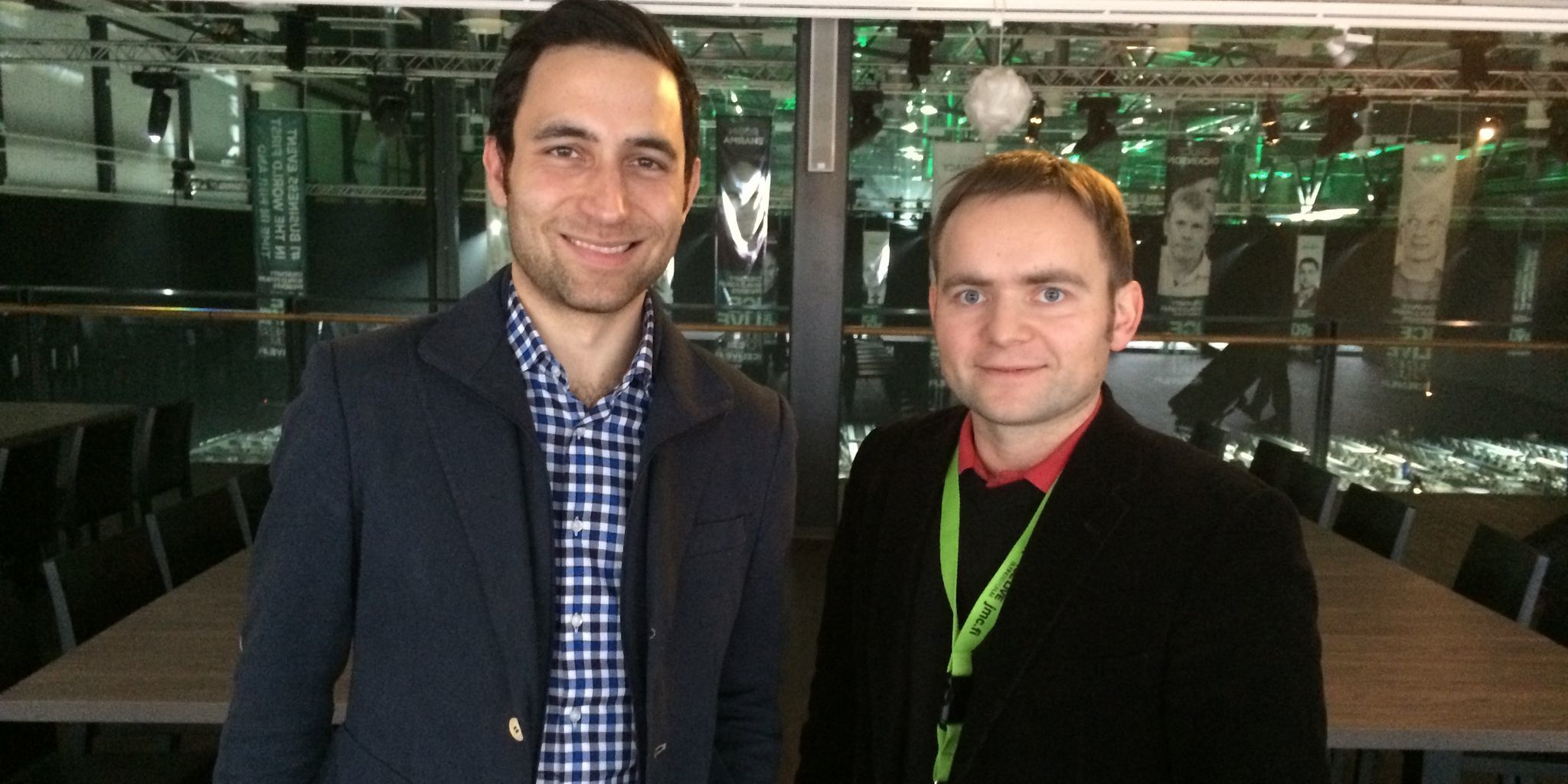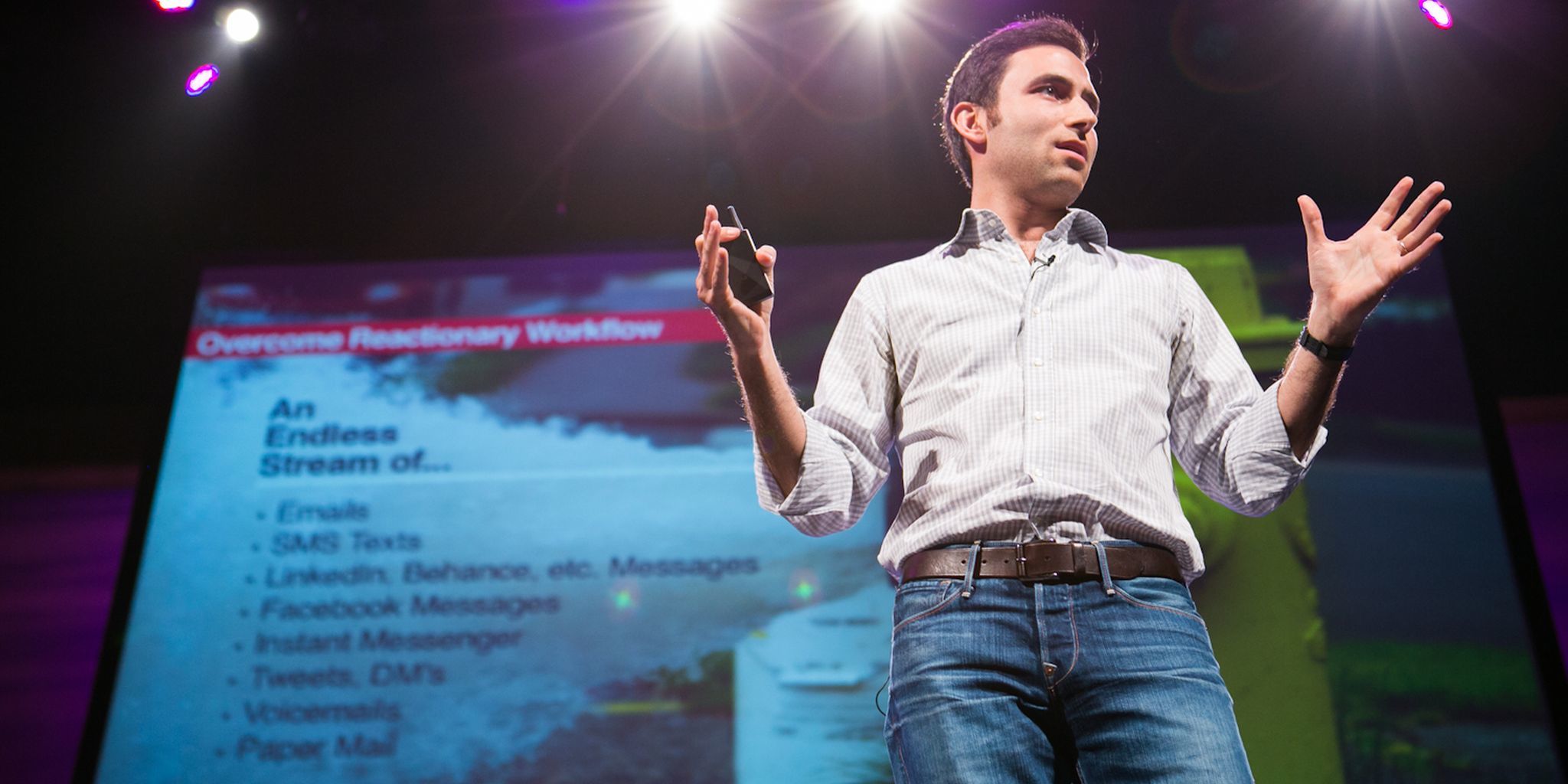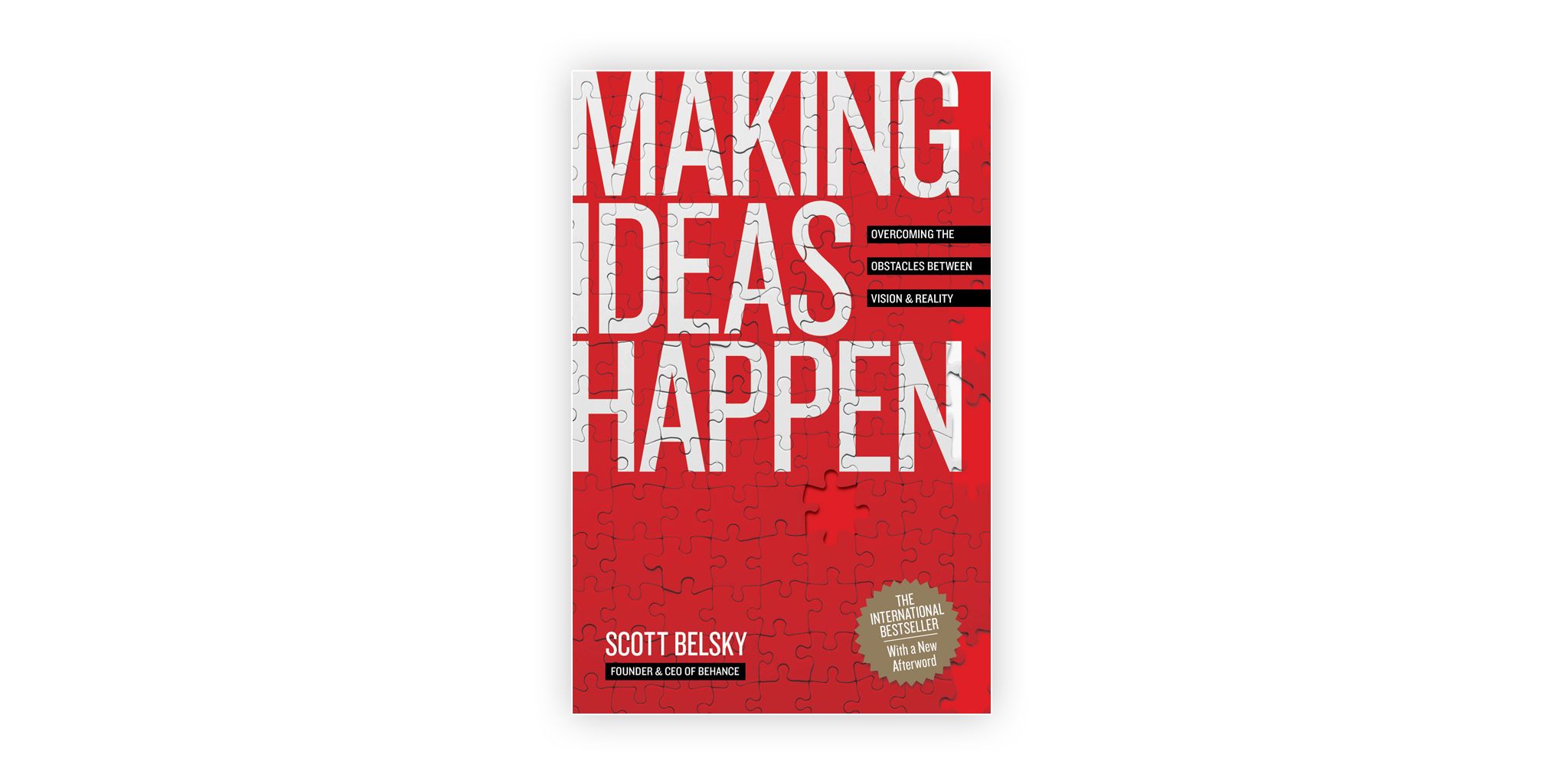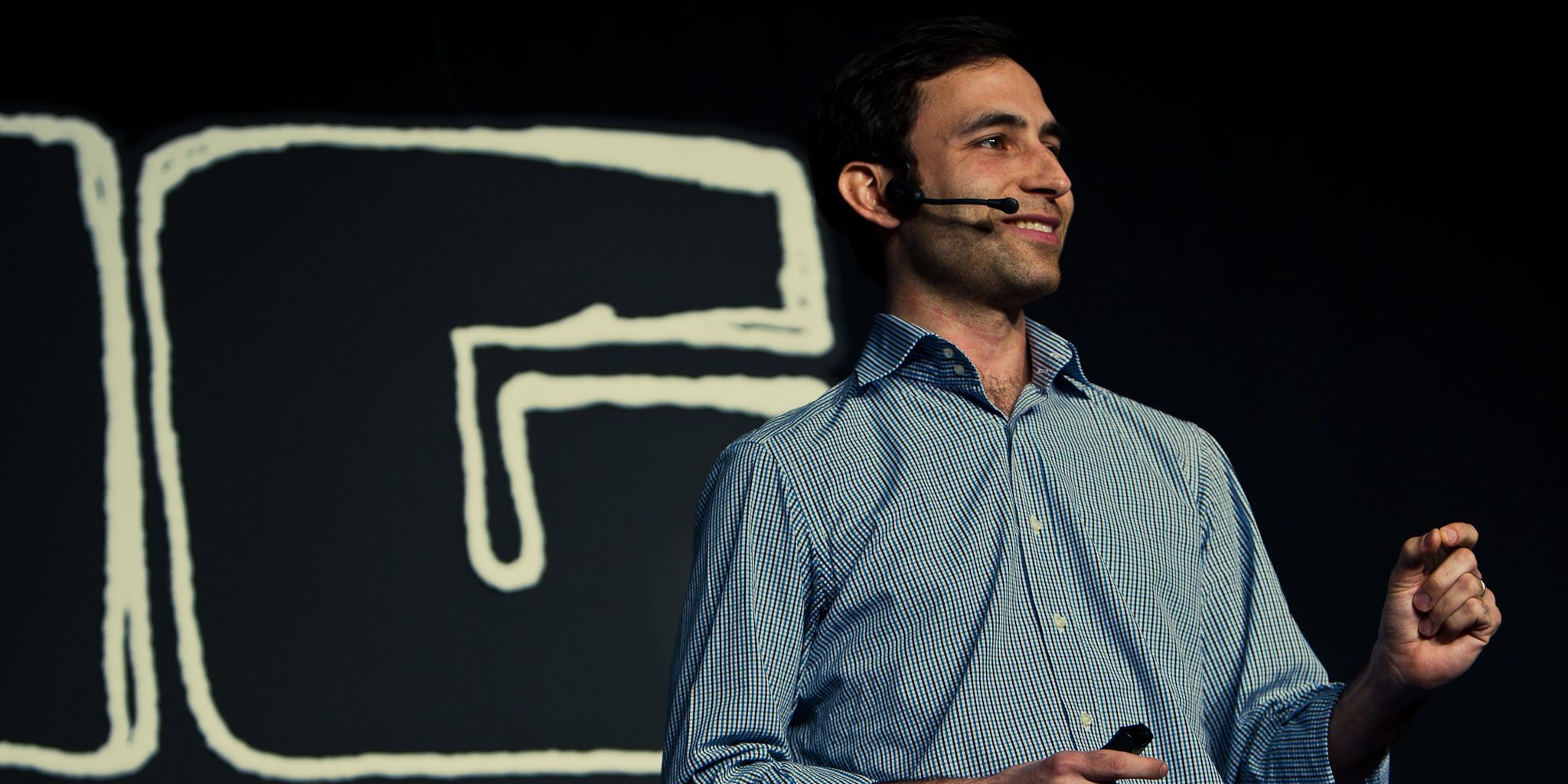Interview with Scott Belsky
Michael Sliwinski: Onstage (at the ICE LIVE conference), you said how not saying no is important to really start making ideas happen. Why is that?
Scott: In improv comedy, the whole notion of improvisation works like this: they say that you never answer with “no.” You always say, “Yes, and…” or “yes, but…” It is never “no” because you always want to build upon what was [just] said. I think it is the same thing in a situation when you say to someone, “Here is what we wanna do.” And rather than them saying, “No, we can’t do it,” they should say, “Yeah, I think it is a great idea, and I think that what we would have to do is get better servers [for example].” There always has to be a counter-solution rather than just a complaint.
I think that is the kind of atmosphere you want to have in order to have an innovative team. So the thing I encourage people to do is always break down every issue into its littlest components. “Oh, legal says we can’t do it” or “The computer guys say we can’t do it”. Alright, what exactly can’t be done? “Oh well, there is a law that says this.” OK, does anyone else have a similar problem so that we could see how they solved it? What do our competitors do? You always have to press it down. That is what I do with my team whenever I get an answer like that. Just “atomize” — you know, break things into small pieces.
Michael: Great advice. Totally agree. But it’s always difficult to really nail down the problem and break it down correctly, right?
Scott: Yes, the process to start asking questions and breaking it all down can be annoying. When asked, “But why does legal say no?” They start saying, “I don’t know! They just said no! Why are you asking me?”
There is a list of questions you have to ask in order to just drill down into the meat of a matter and really solve it. It is annoying because that’s the way organizations work. Legal says “no” so you just don’t do it. And it is annoying to push that because it feels like it is not productive. It feels like you are having me do something that is not my job. And the thing you are really trying to do is break through the friction, break through bureaucracy.
Michael: There is an anecdote about Steve Jobs when he was looking at a prototype of a car. He said, “Look, this is a prototype car.” But later as they started producing it, there was legal, engineering, design … The result had nothing to do with the car they designed in the first place.
Scott: Yeah, they started saying things like, “We can’t do the round corners, but we can do it this way because that is already in another car. We can’t use that radio, but we can use this one because it is already in this other car.” And before you know it, the new car looks like the other car! Yes, it’s the fight. It’s the fight that all of us must take part in to drive new ideas forward.
And you really can’t be satisfied with anything. The truth is I am always proud of myself and my team, but I am never satisfied with the results. And I think this is a healthy level of dissatisfaction. Whenever I look at the current version of our product, I am anxious for the next version already. You know, I hate our current product :) Always. Because I see what it could be. All I see is the limitations that got between what we envisioned and what we have. Maybe that’s what is interesting about Apple. They do so few things, which they can really, really drive, and [therefore] get very close to the vision that they had.
Michael: Yes, I know the feeling. We’re in the midst of building new Nozbe 2.0, and I’m so looking forward to it; I already hate our “current” version of Nozbe. This is what drives people forward, right?
Scott: Yes. I was always spending an inordinate amount of time on the things that I just found enjoyable versus what I thought needed to be done just to get it done. And that’s what I hated a lot at school — I was doing some things just to do it, and I just hate doing that. And you want to do things because they really drive you. Maybe the thing we all look for in our career is to do something that really drives us so that we can get near the curve of perfection.

Michael: Yes, but to achieve perfection, you need to work with people, and to do that you’ve got to have meetings. How do you make meetings productive and “actionable”?
Scott: Well, there is an important problem you need to solve, and getting all the decision makers in the room is a great use of time if there is a decision needed or if actions are taken or decided upon. I think you also sometimes have to have a meeting that generates “buy in” to get people on board with what needs to happen and to get people excited about it.
However, oftentimes we schedule the meetings that are just awaited and keep people connected, and I think that we spend too much time on that sometimes when it can be really quick — a check-in meeting or an e-mail. Because during the time you are in the meetings, you could be taking action. It is really hard to actually take actions in the meeting.
Michael: I totally agree. That is why I’ve minimized the number of meetings in my company. Scott, in your presentation, you mentioned three types of personalities: Doer, Dreamer, and Switcher. Which type are you?
Scott: I’d probably identify myself with the Switcher. I’m a Dreamer, [then] a Doer, [then] a Dreamer, [then] a Doer … I think I suffer from the Switcher’s negative tendency to be able to get too many things off the ground, and then realize that one of them has to die in order to make the other one really thrive. Even looking back at my business, there were things that we were doing in 2006, 2007, and 2008 that we don’t do anymore. We had it killed. In fact, the current Behance product that we have is actually much simpler than it was five or six years ago. We eliminated a lot of major features, groups were eliminated, settings, the projects, and publishing … just a lot of things we killed over time rather than the other way round.
Michael: And you sold Behance to Adobe! Congratulations! How do you like it to be in a big corporation rather than a small startup? What are your challenges?
Scott: Thanks. Yes, now it’s an interesting opportunity that I am excited about. I still run the Behance community part of the business. Then again, we are part of Adobe, which is a very large company. And it is a company that is thinking a lot more about creative workflow. And Adobe used to always be about the features: the next version of Photoshop, the next version of Creative Suite, etc. Now there is a new mentality in the company: maybe we should focus less on features and more on improving the way people create, making it easier, making everything more connected, your fonts and colors, and all these different things. And if we can improve the workflow itself, then we can really help people make ideas happen.
I think that the shift in Adobe’s thinking very much strongly correlates to my own desire to help creators get more organized and make the ideas happen, and that’s why we are part of Adobe. It’s because I found a lot of alignment with that.
Michael: In my company, we don’t send e-mails any more. We communicate through our application. And we repeat it like mantra: we have to communicate through tasks, and we communicate through actions. We don’t communicate just to communicate, but to take actions.
Scott: I like that!
Michael: That’s why I identify with your action bias — I think it is really important.
Scott: I agree. When you send e-mails, you should start with two or three things that start with verbs that you need. Oftentimes in e-mails there are five paragraphs, and at the end there is the thing you are asking for; I think it should always be inverted. I should lead with the actions. In fact, in the subject line of the e-mail, you should put the action required just to ensure that people know that it’s actionable.
Michael: Yeah! Exactly. Tools are important for personal productivity, but so is your work environment. Every year in my blog, I post the pictures of my home office. Every year it is different. And my friends keep asking me why I spend time improving my home office all the time. This is counterproductive. I reply, “No. Every year, I have to refresh it.” It is like you said today — keep improving, even if it is not broken. Why is it important in your opinion?
Scott: The way that we work and our workspace have tremendous influence over the work itself. And we tend to not even care about it. A lot of people would just go with a little desk and take it as it is and not care about other things. But I think your work should be considered a piece of art. Every type of work should be considered someone’s art. Because there is art in the science and in everything. Then, set up your easel — set up your system in a way that really inspires you to do some of your work. I think it is worth spending energy and time on how you organize.
I remember in the beginning of every school season, everyone was getting fresh pencils and fresh pens, and a new blue-sleeve. You are actually excited for school! It’s about all these new materials. Of course later on in the year, you get less excited about school. But why are you so excited at the beginning? It’s because you have the new utensils and new outfit to do some of your greatest work.

Michael: How do you manage the love for your job and the love for your family?
Scott: Well, I think that people who say that these things need to be completely separated and compartmentalized are very idealistic. I find that all these things blend. I am a very passionate person, always committing some percentage of my brain to processing things that I am interested in, and I just can’t turn that off no matter how hard I try. That is especially true when I am building something new. There is a degree of uncertainty, and you are constantly processing things in the back of your mind. And it is the price you pay for doing something new.
Michael: That’s so true!
Scott: If you have a 9 to 5 job where you are just going in, clicking buttons all day, and then leaving, you have nothing to worry about it. When you’re going home, you have 100 percent capacity to think of the other things you are passionate about. This is unrealistic in an entrepreneurial, creative world. With creative people, there is always a degree of our brain that is processing the work that we are doing.
So it is always a challenge for me, too, but I think it is a muscle that you exercise over time, and I’ve come to a pretty good balance. If you have some rules in terms of being home on certain nights and things like that, you can preserve your relationships.
Michael: Yes, it’s a challenge. But today, you talked even more about challenges. Let me give you an example: I have a designer in the team who thinks I like him because he is a good designer, which is true. But I like him even more because he challenges me all the time. He really pulls the rope and makes me think in the way he thinks.
Scott: Yeah. You wanna have a challenge. I think it is a very important thing to recognize that when making the decision that you want to explore the whole range of possibilities, and you have only one section for that in your brain. The idea is to find the people who can cover the rest of the territory. And the problem is that we typically want to hire people who are “just like us.” We want to have people with the same ideas that we do because it’s easier.
Michael: And they would pat you on the back …
Scott: Yeah. That’s great! Yeah, let’s do that! But really, like you, I gain a lot more from working with people who challenge me and say, “I have a different way of doing it.” It intrigues me and makes the job even more interesting.
To learn more about productivity in creative teams, read Scott’s bestselling book Making Ideas Happen: Overcoming the Obstacles Between Vision and Reality

Photos: Flickr / Silicon Prairie News and Chris Guillebeau

